Biography
Katerina Goltzwart: Bridging Art, Science, and Technology

Katerina Goltzwart is a name that has emerged in recent years as a unique force in the interdisciplinary nexus of art, science, and technology. A multifaceted innovator, she has seamlessly integrated these traditionally distinct fields into a cohesive vision that challenges conventional boundaries and redefines what it means to create. In her works, the boundaries between the digital and the physical world blur, creating transformative experiences that resonate deeply with audiences across the globe. Whether through immersive installations, groundbreaking digital art, or thought-provoking scientific experiments, Goltzwart has positioned herself as a leader at the forefront of a new era of artistic exploration.
At the core of Goltzwart’s work is her belief that art is not merely a product of inspiration but a platform for inquiry, experimentation, and innovation. Her approach to art is heavily influenced by her scientific background, as well as her interest in how technology can enhance our understanding of the natural world. She is a living example of how the worlds of art and science are not just complementary but can be symbiotic in a way that catalyzes new ideas and perspectives. Through her pioneering efforts, Goltzwart has shown that creative expression need not be confined to a single medium or discipline; instead, it should be a dynamic interplay of ideas, tools, and methods that push human understanding forward.
The Intersection of Art and Science
For Goltzwart, art and science are not opposing forces but rather intertwined disciplines that can inform and inspire each other. She often speaks about her work as a “dialogue between the visible and the invisible,” where science provides the tools to explore the unseen realms of the universe, and art provides the language to communicate those discoveries. It is this dynamic that has allowed Goltzwart to make waves in both the artistic and scientific communities.
Her fascination with science began early in life, where she was captivated by the natural world and the mysteries of the universe. As she progressed through her academic career, Goltzwart’s deep interest in biology, physics, and technology influenced her artistic approach. Unlike many artists who work within a single medium, Goltzwart approaches her projects as a fusion of both scientific inquiry and creative expression. By doing so, she has introduced new paradigms to the art world, inviting audiences to experience the convergence of these two disciplines in ways that have never been seen before.
One of her more well-known works involves an exploration of the neural networks in the human brain. Goltzwart collaborated with neuroscientists to create an interactive installation that visualized brain activity in real time. This immersive experience used data from EEG readings to control visuals and sound, allowing viewers to “see” and “hear” their thoughts in a way that was both informative and mesmerizing. By turning abstract neurological data into an interactive work of art, Goltzwart not only engaged the public with complex scientific concepts but also opened up new ways of experiencing the invisible world of the mind.
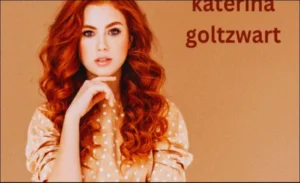
Embracing Technology: A New Canvas for Expression
Goltzwart’s relationship with technology is one that allows her to continuously challenge the boundaries of art. She has long believed that technology, far from being a threat to artistic expression, is a powerful tool for enhancing it. Through the use of cutting-edge digital tools, artificial intelligence, and immersive technologies such as virtual and augmented reality, she has been able to create pieces that are not only visually captivating but also conceptually deep. The use of technology, in her view, allows art to evolve into an experience rather than just an object.
In one such project, Goltzwart utilized augmented reality (AR) to create a virtual art gallery that could be experienced through smartphones and AR glasses. This gallery didn’t just display her works but also interacted with the viewer’s movements, responding to the person’s position and gestures. This created a deeply personalized and immersive experience, where each viewer saw the artwork in a unique way, based on their individual movements within the space. Goltzwart’s use of AR in this context speaks to her belief that technology can break down the traditional constraints of physical space, allowing art to become an experience that transcends the gallery walls.
Another aspect of Goltzwart’s technological approach is her integration of artificial intelligence (AI) in the creative process. She has used machine learning algorithms to generate visual art that is shaped by the inputs of the audience. This AI-driven art is often participatory, with the audience directly influencing the final outcome of the piece. By allowing technology to co-create with the viewer, Goltzwart blurs the line between artist, machine, and spectator, creating a truly collaborative art experience. Her experiments with AI are a perfect example of how technology can not only enhance artistic expression but also transform the very nature of what art is and can be.
The Role of Data in Artistic Creation
In Goltzwart’s work, data plays a critical role—not just as a source of information but as a material in its own right. She often uses vast datasets to inform her artistic practice, whether they are drawn from the natural world, human behavior, or complex scientific phenomena. Rather than simply presenting these datasets as raw numbers or abstract charts, Goltzwart transforms them into visual and interactive art that conveys meaning through form, color, and structure. For example, in one of her projects, she used environmental data from around the world, such as climate patterns and geological shifts, to create an immersive light and sound installation that responded dynamically to real-time changes in the global environment.
This project, like many others, reflects Goltzwart’s commitment to raising awareness about the interconnectedness of art, science, and the planet. By using data not just as a source of knowledge but as a creative medium, she offers a new way of thinking about how we understand and relate to the world around us. Data, in Goltzwart’s hands, becomes a means to provoke conversation, challenge assumptions, and inspire action.
Pushing the Boundaries of Interactivity
Goltzwart’s works are known for their deep engagement with the audience. She firmly believes that the viewer is not a passive observer of art but an active participant in the experience. This belief has led her to create numerous interactive installations where the boundaries between artist, technology, and audience are constantly shifting. In these works, technology is not just a tool for creating art but a medium that facilitates an ongoing dialogue between the artwork and the audience.
In one of her most well-received projects, Goltzwart designed an interactive installation based on the principles of quantum mechanics. The artwork consisted of a series of light sculptures that responded to the movement of visitors within the space. As viewers moved through the space, their movements affected the way the light sculptures were illuminated and arranged. The installation metaphorically reflected the principles of quantum physics, where the observer has the ability to alter the state of the system being observed. Through this dynamic interplay, Goltzwart not only illustrated complex scientific theories but also invited viewers to reflect on their own role in the creation of meaning and experience.
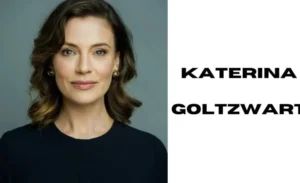
The Ethical Dimension of Technology and Art
While Goltzwart is undoubtedly a proponent of using technology in her artistic practice, she is also keenly aware of the ethical considerations that come with it. As technology becomes more embedded in our lives, its impact on society, culture, and the environment cannot be ignored. In her work, she often grapples with the implications of technological advances, questioning their role in shaping our future.
Goltzwart’s installation on the ethics of artificial intelligence, for instance, posed deep questions about the relationship between humans and machines. Through a series of thought-provoking visual metaphors, the installation explored the idea of autonomy, control, and the ethical dilemmas posed by increasingly sophisticated AI systems. The piece invited viewers to reconsider the moral responsibilities that come with creating and using technology, urging them to think critically about the kind of future we are building with the tools we have.
In this way, Goltzwart’s work serves not only as a means of artistic expression but also as a vehicle for social commentary. By engaging with the ethical dimensions of technology, she encourages audiences to think beyond the immediate aesthetic appeal of her work and consider the larger implications of the world we are creating together.
Conclusion:
Katerina Goltzwart’s work represents the future of art in a world increasingly shaped by technology, science, and data. Through her innovative approach to blending these disciplines, she has created a unique artistic vision that transcends traditional boundaries. By embracing technology not as a threat to creativity but as a tool for expanding it, Goltzwart has opened up new possibilities for what art can be, how it can be experienced, and what it can mean.
Her interdisciplinary approach challenges us to think about the intersections of art, science, and technology in entirely new ways. In doing so, she has become a key figure in the ongoing conversation about the role of art in a rapidly changing world, inviting us to consider not only what art is but what it can become in the age of innovation.
As Goltzwart continues to explore new frontiers, her work serves as a testament to the power of creative thinking and interdisciplinary collaboration. She has shown that, in the hands of a visionary artist, science and technology are not just tools to be used but powerful agents of change, capable of reshaping our understanding of the world and the way we engage with it.
FAQs:
Who is Katerina Goltzwart?
Katerina Goltzwart is an artist and innovator known for blending art, science, and technology in her works. She creates immersive and interactive art installations that often involve cutting-edge technologies like artificial intelligence, augmented reality, and data visualization. Her work challenges traditional boundaries between disciplines, making science and technology accessible through creative expression.
What is the focus of Katerina Goltzwart’s work?
Goltzwart’s work focuses on exploring the intersection of art, science, and technology. She often draws on scientific concepts—such as neuroscience, physics, and environmental data—and uses technology to create art that transforms complex ideas into visually and interactively engaging experiences.
How does Katerina Goltzwart incorporate science into her art?
Goltzwart incorporates science by collaborating with scientists and using scientific data as the basis for her art. For example, she has worked with neuroscientists to create installations visualizing brain activity and used environmental data to shape interactive artworks that respond to real-time global events. Her pieces often communicate scientific phenomena in ways that are accessible and engaging to the general public.
What technologies does Katerina Goltzwart use in her art?
Goltzwart uses a range of modern technologies in her art, including artificial intelligence (AI), augmented reality (AR), virtual reality (VR), machine learning, and data visualization tools. These technologies allow her to create interactive and immersive experiences where the viewer can directly influence the art, often blurring the lines between artist, technology, and audience.
How does Goltzwart use data in her artwork?
Goltzwart transforms raw scientific and environmental data into visual and interactive art. By turning data into an artistic medium, she creates installations that communicate the complexity of natural and human-made systems. This approach makes abstract concepts tangible, helping audiences understand and engage with data in meaningful ways.
What is the role of interactivity in Goltzwart’s art?
Interactivity is a central theme in Goltzwart’s work. She believes that art should be a dynamic and participatory experience, rather than a passive one. Many of her installations allow viewers to interact with the art, influencing the visual or auditory output. This participation helps create a personalized connection between the audience and the artwork, making the experience more immersive and impactful.
-
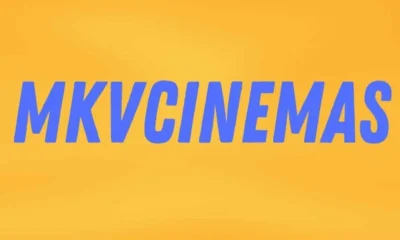
 Blog12 months ago
Blog12 months agoDiscover The World Of Movies With Mkvcinemas.com
-

 Biography12 months ago
Biography12 months agoMadeline Argy: Age, Height, and Family Background Revealed
-
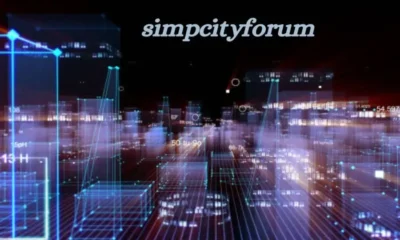
 Tech12 months ago
Tech12 months agoSimpCityForum: One of the Most Interesting Online Communities
-
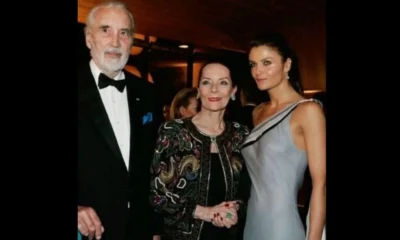
 Biography12 months ago
Biography12 months agoCelebrityMeet Christina Erika Carandini Lee?: All You Need To Know
-
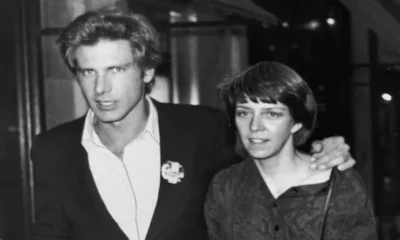
 Biography11 months ago
Biography11 months agoMary Marquardt: The Woman Behind Harrison Ford’s Rise
-

 Biography12 months ago
Biography12 months agoHow Old Is SZA Daughter? Discover SZA Daughter’s Age, Name, and More
-

 Crypto Currency1 year ago
Crypto Currency1 year ago5starsstocks .com: How It’s Useful and Helpful
-

 Blog12 months ago
Blog12 months agoWhat is FilthyGrid? Exploring the World of FilthyGrid
-

 Health & Fitness1 year ago
Health & Fitness1 year agoWhat Has Kiolopobgofit in It? Exploring the Enigmatic Concept
-

 Biography12 months ago
Biography12 months agoChevy Chase Net Worth, Bio, Age, Height, Wife & Family

